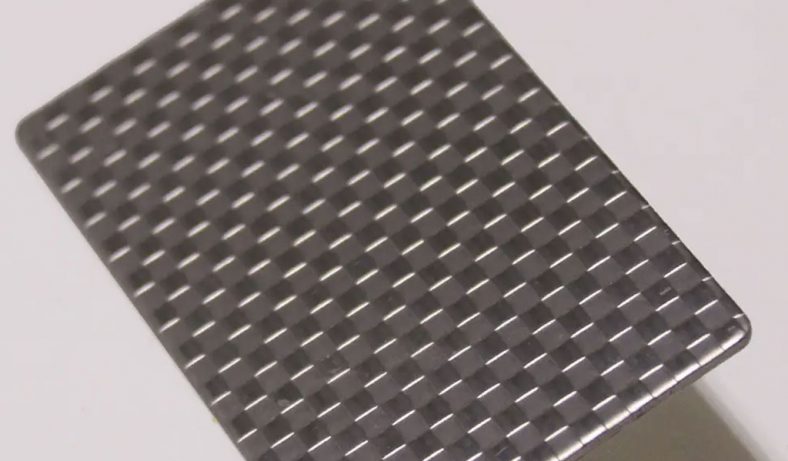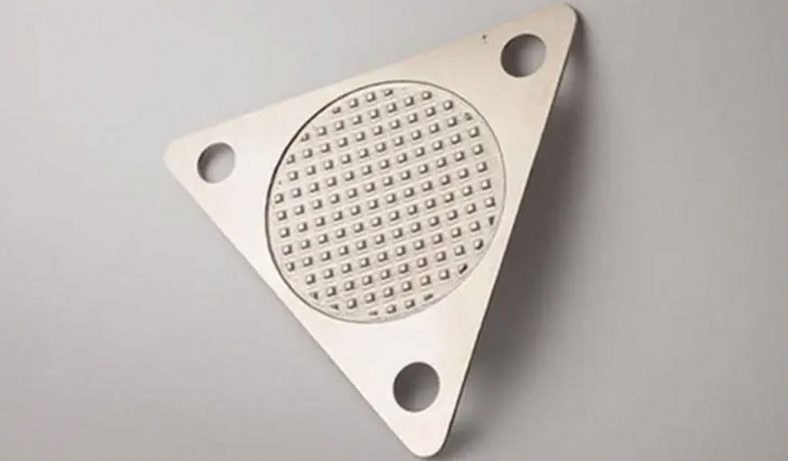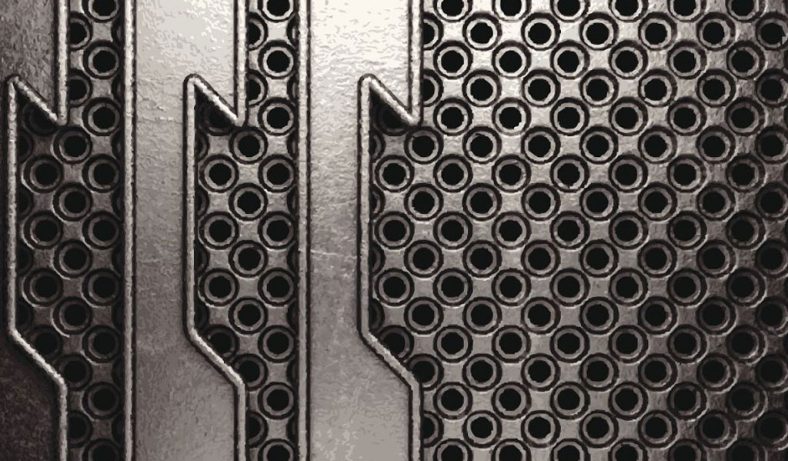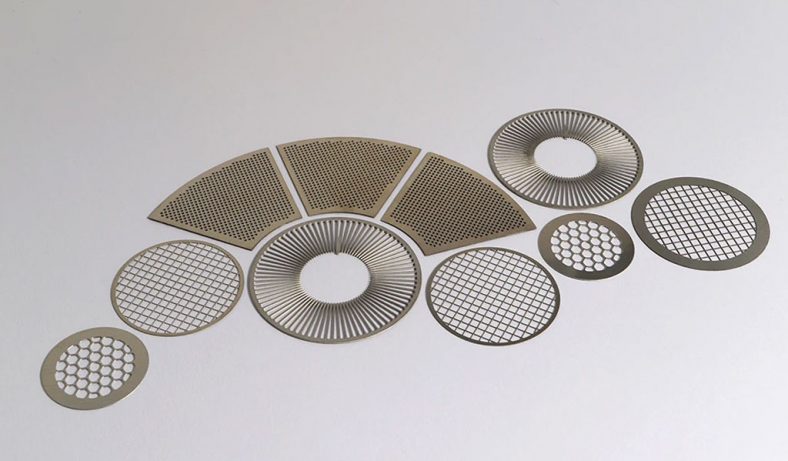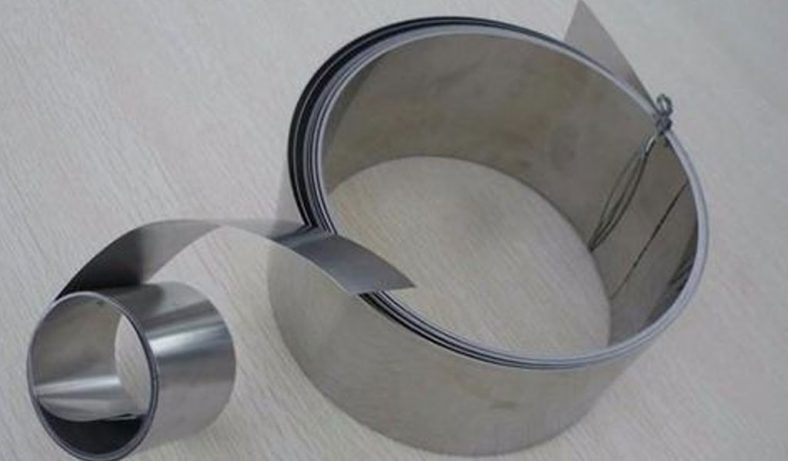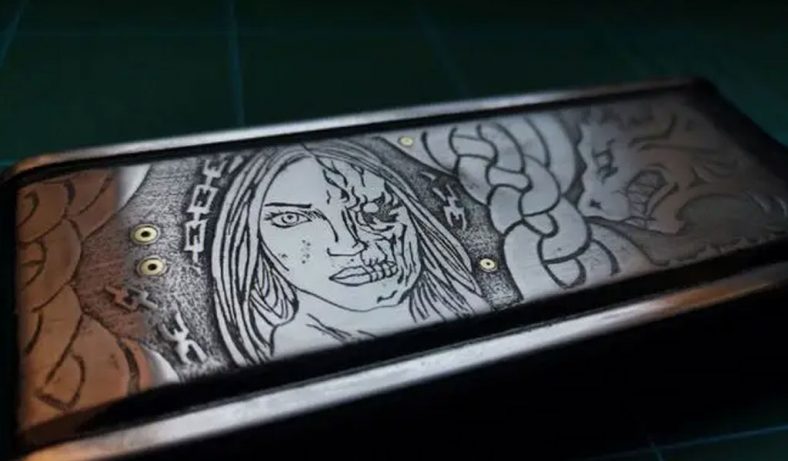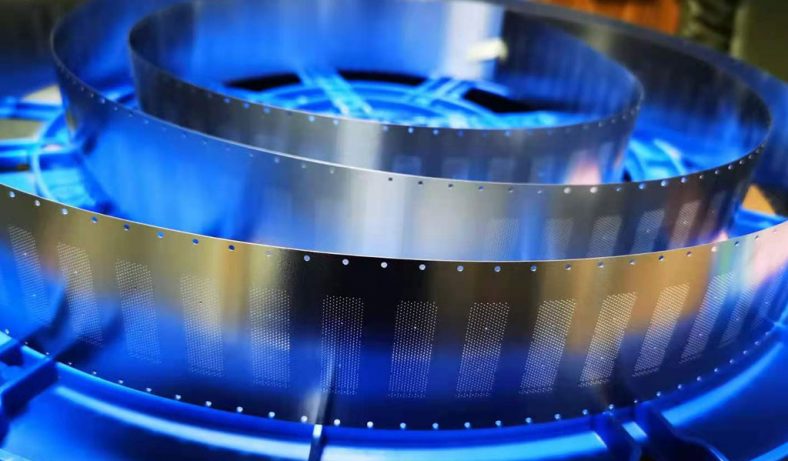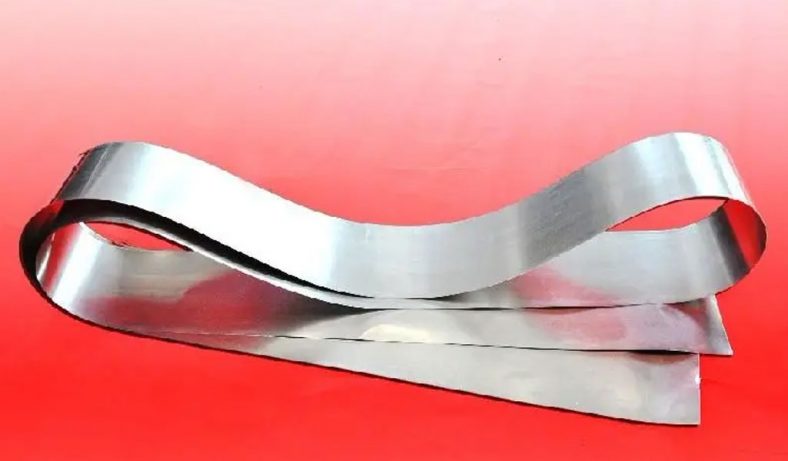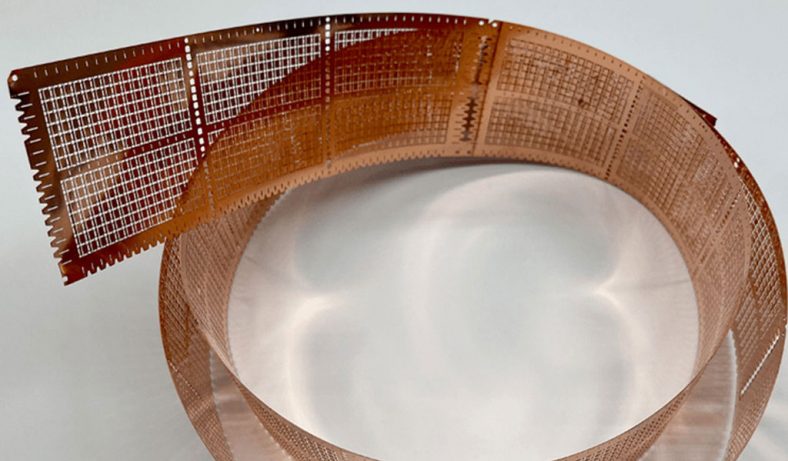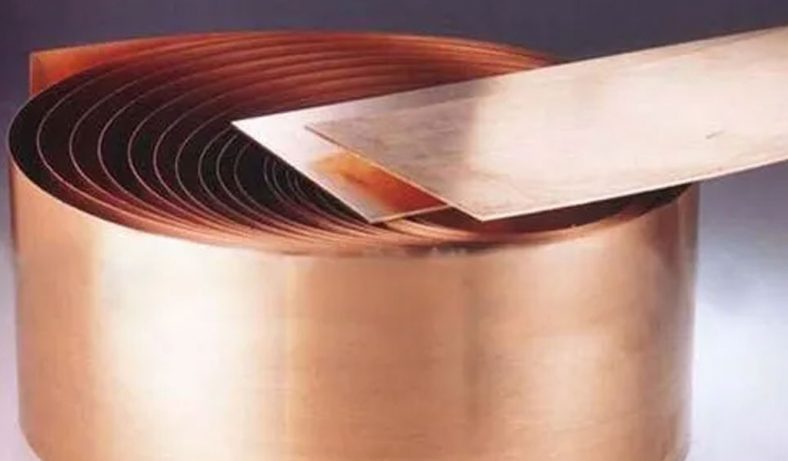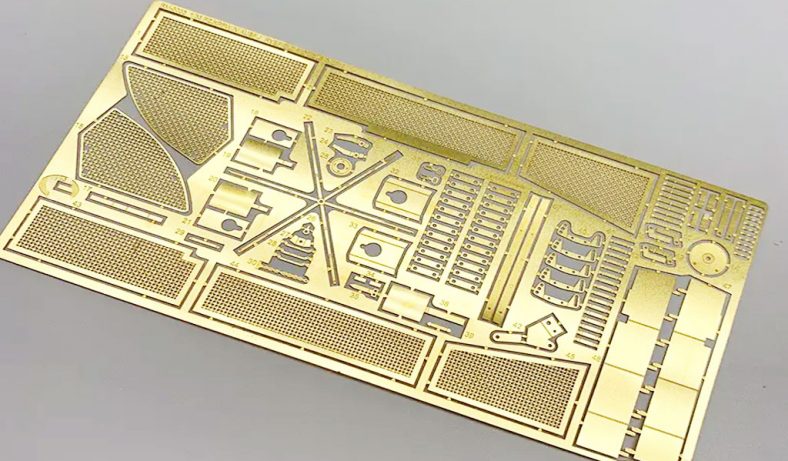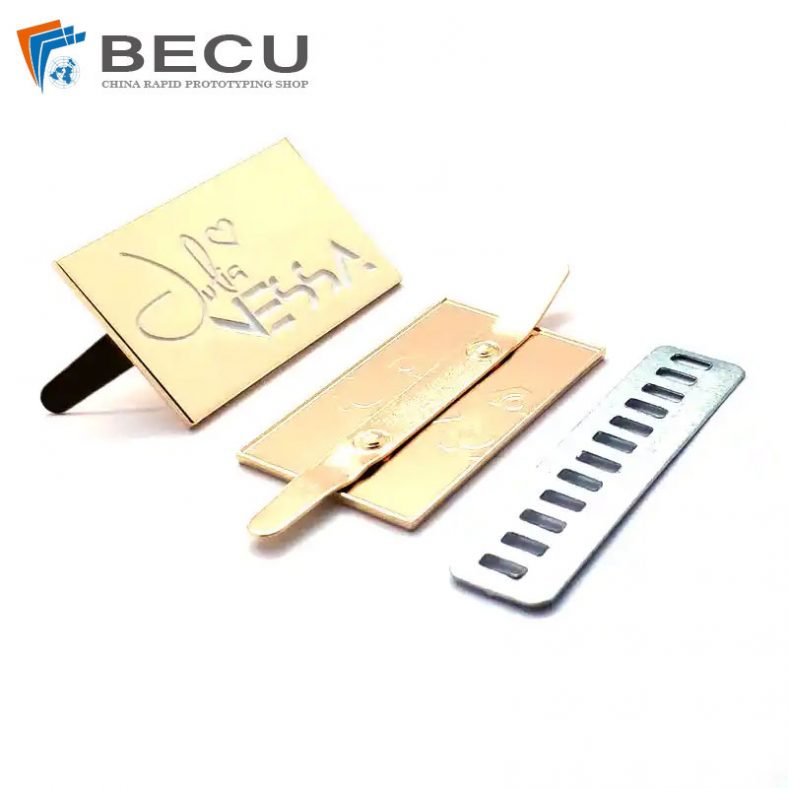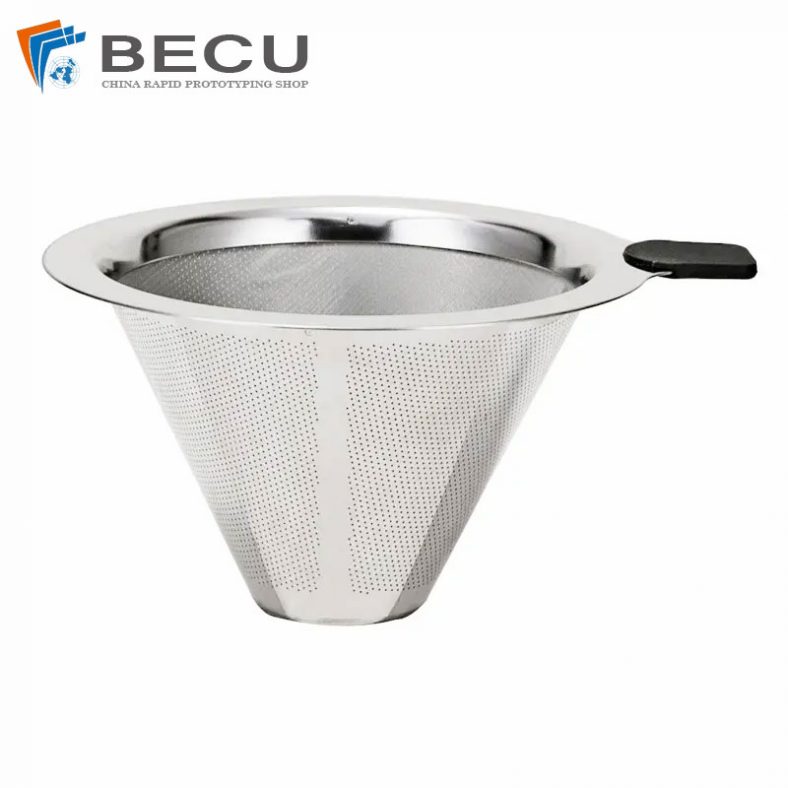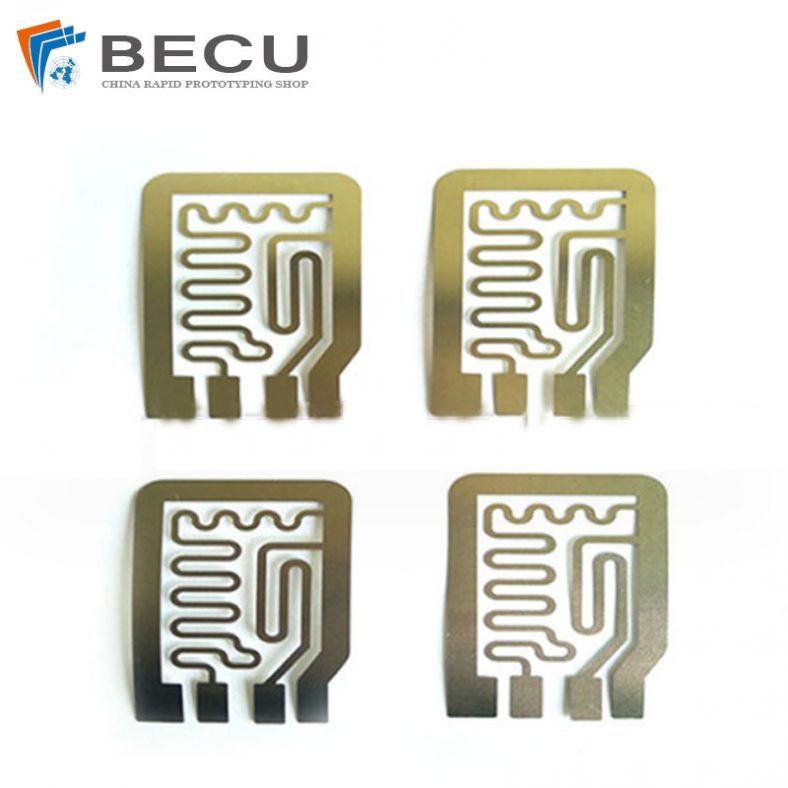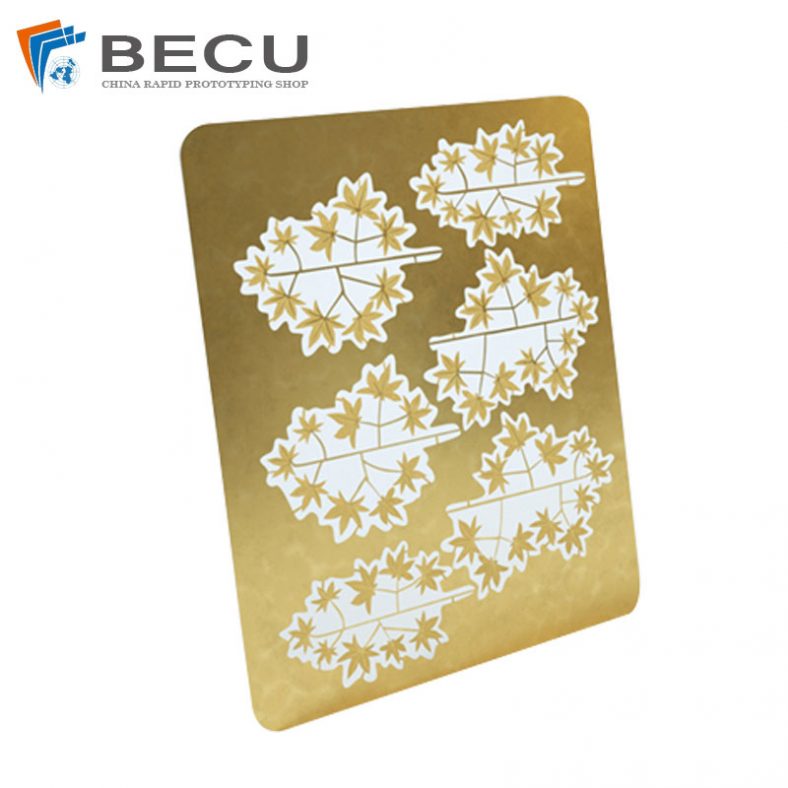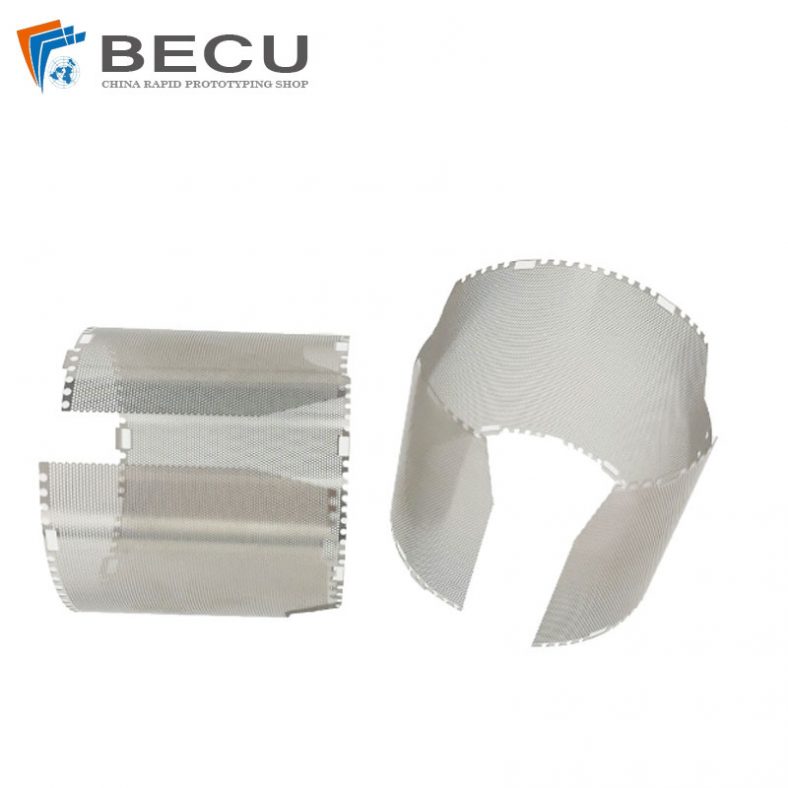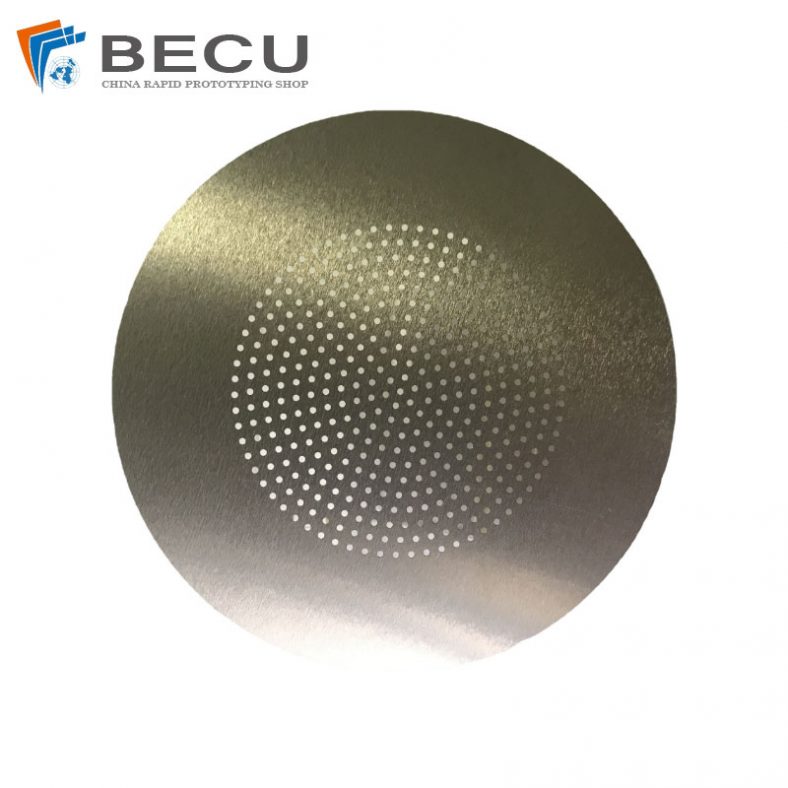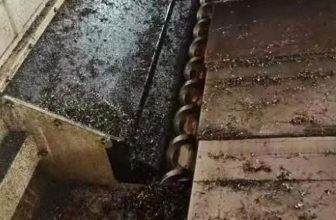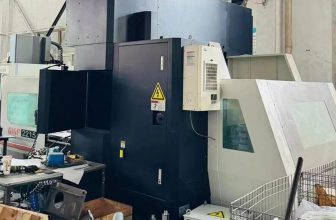Magnesium alloys, characterized by their low density, high strength-to-weight ratio, and biocompatibility, have emerged as promising materials for micro-devices, particularly in biomedical, aerospace, and electronics applications. The fabrication of magnesium alloy micro-devices requires precise control over micro- and nanoscale features, which is achieved through advanced nanofabrication techniques such as lithography and etching. These processes, when optimized in a coordinated manner, enable the production of intricate microstructures with high resolution, accuracy, and reproducibility. This article explores the principles, methodologies, challenges, and recent advancements in the coordinated optimization of lithography and etching for the preparation of magnesium alloy micro-devices. By integrating these processes, researchers and engineers can address the unique material properties of magnesium alloys, such as their reactivity and mechanical characteristics, to produce functional micro-devices with applications ranging from biodegradable implants to lightweight electronic components.
Magnesium Alloys: Properties and Applications
Magnesium alloys are lightweight metallic materials composed primarily of magnesium, often alloyed with elements such as aluminum, zinc, manganese, or rare earth metals to enhance their mechanical and corrosion properties. With a density of approximately 1.74 g/cm³, magnesium is one of the lightest structural metals, making it ideal for applications where weight reduction is critical, such as aerospace components and portable electronics. Additionally, magnesium alloys exhibit good machinability, high specific strength, and excellent damping capacity, which are advantageous for micro-device fabrication.
In the biomedical field, magnesium alloys are particularly valued for their biocompatibility and biodegradability. Unlike traditional implant materials like titanium or stainless steel, magnesium alloys can degrade naturally in the body, eliminating the need for secondary surgeries to remove implants. This property makes them suitable for applications such as bone fixation devices, stents, and tissue engineering scaffolds. However, the high chemical reactivity of magnesium, particularly its susceptibility to corrosion in aqueous environments, poses significant challenges for micro-device fabrication. Precise control over surface features and protective coatings is essential to ensure functionality and longevity.
In electronics, magnesium alloys are explored for their potential in lightweight, high-performance components such as microelectromechanical systems (MEMS) and flexible circuits. The ability to fabricate complex microstructures with high precision is critical to achieving the desired electrical and mechanical properties in these applications. Lithography and etching, as cornerstone processes in nanofabrication, play a pivotal role in shaping these microstructures.
Fundamentals of Lithography
Lithography is a patterning process used to transfer a desired pattern onto a substrate, typically through the selective exposure of a photosensitive material known as a photoresist. The process is fundamental to micro- and nanofabrication, enabling the creation of features ranging from micrometers to nanometers in size. In the context of magnesium alloy micro-devices, lithography must be tailored to accommodate the material’s unique properties, such as its reactivity and surface characteristics.
Photolithography
Photolithography, also known as optical lithography, is the most widely used lithographic technique in microfabrication. It involves the use of ultraviolet (UV) light to expose a photoresist-coated substrate through a photomask, which contains the desired pattern. The exposed areas of the photoresist undergo a chemical change, becoming either soluble (positive resist) or insoluble (negative resist) in a developer solution. After development, the pattern is transferred to the underlying substrate via etching or other processes.
For magnesium alloys, photolithography must address challenges such as substrate reflectivity and chemical compatibility. Magnesium’s high reflectivity can cause unwanted light scattering during exposure, leading to reduced pattern fidelity. To mitigate this, anti-reflective coatings (ARCs) are often applied to the substrate. Additionally, the choice of photoresist and developer must consider magnesium’s reactivity to avoid unintended chemical interactions. For instance, alkaline developers commonly used in positive resists may corrode magnesium, necessitating the use of neutral or mildly acidic developers.
Electron Beam Lithography (EBL)
Electron beam lithography (EBL) is a maskless technique that uses a focused beam of electrons to directly write patterns onto a resist-coated substrate. EBL offers superior resolution compared to photolithography, capable of achieving feature sizes below 10 nm. This makes it particularly suitable for prototyping and research applications involving magnesium alloy micro-devices, where intricate nanoscale features are required.
However, EBL is a serial process, meaning it patterns the substrate point by point, resulting in low throughput compared to photolithography. For magnesium alloys, EBL requires careful optimization of resist materials, such as polymethyl methacrylate (PMMA), which is commonly used due to its high contrast and resolution. PMMA can function as both a positive and negative resist depending on the electron dose, but its limited etch resistance can pose challenges during subsequent etching steps. Novel resists, such as hydrogen silsesquioxane (HSQ), have been explored to improve etch selectivity for magnesium alloys.
Nanoimprint Lithography (NIL)
Nanoimprint lithography (NIL) is a mechanical patterning technique that involves pressing a hard mold into a soft resist material to create a pattern. The resist is then cured (e.g., via UV light or heat) and the mold is removed, leaving the desired pattern on the substrate. NIL is particularly advantageous for high-throughput production of micro- and nanostructures, as it does not rely on optical or electron beam exposure.
For magnesium alloys, NIL offers a cost-effective alternative to EBL for creating complex patterns, such as those required for biomedical scaffolds or MEMS components. The process requires molds with high durability, typically made from silicon or quartz, to withstand repeated imprinting cycles. Additionally, the resist material must be compatible with magnesium’s surface chemistry to ensure proper adhesion and pattern transfer. Recent advancements in NIL have demonstrated feature sizes as small as 5 nm, making it a promising technique for next-generation magnesium alloy micro-devices.
Etching Processes for Magnesium Alloys
Etching is the process of selectively removing material from a substrate to transfer a lithographically defined pattern. For magnesium alloys, etching must be carefully controlled to achieve high precision while minimizing damage to the substrate. The two primary etching methods are wet etching and dry etching, each with distinct advantages and challenges when applied to magnesium alloys.
Wet Etching
Wet etching involves the use of liquid chemical etchants to remove material from the substrate. For magnesium alloys, common etchants include dilute acids such as hydrochloric acid (HCl), nitric acid (HNO₃), or organic acids like oxalic acid (C₂H₂O₄). Wet etching is isotropic, meaning it etches uniformly in all directions, which can lead to undercutting and reduced resolution for fine features.
The high reactivity of magnesium alloys makes wet etching particularly challenging. Strong acids can cause excessive corrosion or hydrogen evolution, which may damage the substrate or create surface defects. To address this, milder etchants like oxalic acid have been investigated for their ability to selectively etch magnesium while preserving pattern fidelity. For example, a study demonstrated that oxalic acid etching of AlSi alloy powders (a magnesium alloy precursor) produced porous silicon structures with feature sizes of 1–2 μm, highlighting the potential for controlled wet etching in micro-device fabrication.
Dry Etching
Dry etching, also known as plasma etching or reactive ion etching (RIE), uses a plasma of reactive gases to remove material from the substrate. Unlike wet etching, dry etching is anisotropic, meaning it etches primarily in the vertical direction, enabling higher resolution and better control over feature shapes. Common gases for dry etching magnesium alloys include chlorine-based (e.g., Cl₂, BCl₃) or fluorine-based (e.g., SF₆) plasmas, often combined with inert gases like argon to enhance etch uniformity.
Dry etching is particularly suited for magnesium alloys due to its ability to produce high-aspect-ratio features with minimal undercutting. However, the process requires careful optimization of plasma parameters, such as gas composition, pressure, and power, to prevent surface roughening or redeposition of etched material. For instance, a study on cryogenic etching of silicon using SF₆–O₂ plasma achieved 20 nm trenches with aspect ratios of over 8:1, suggesting similar potential for magnesium alloys with tailored plasma chemistries.
Metal-Assisted Chemical Etching (MACE)
Metal-assisted chemical etching (MACE) is an emerging technique that combines aspects of wet and dry etching. In MACE, the substrate is coated with a thin layer of metal catalyst (e.g., gold, silver, or platinum), which induces localized electrochemical reactions in a solution containing hydrofluoric acid (HF) and an oxidant like hydrogen peroxide (H₂O₂). The metal catalyst enhances the etching rate in specific areas, enabling the formation of high-aspect-ratio nanostructures.
MACE is particularly promising for magnesium alloys due to its ability to create precise nanostructures without expensive equipment. For example, a study on GaAs substrates demonstrated the formation of nanorod and nanohole structures using MACE, with applications in optoelectronic devices. For magnesium alloys, MACE could be adapted to create porous or textured surfaces for biomedical implants, enhancing osseointegration or drug delivery capabilities. However, the process requires careful control of catalyst deposition and etchant concentration to avoid non-uniform etching.
Coordinated Optimization of Lithography and Etching
The successful fabrication of magnesium alloy micro-devices relies on the seamless integration of lithography and etching processes. Coordinated optimization involves aligning the parameters of each process to achieve the desired feature size, shape, and functionality while mitigating the challenges posed by magnesium’s material properties. Key aspects of this optimization include resist selection, process compatibility, and defect management.
Resist Selection and Compatibility
The choice of photoresist is critical to ensuring compatibility between lithography and etching. For photolithography, chemically amplified resists (CARs) are commonly used due to their high sensitivity and resolution. However, CARs can suffer from limitations such as line edge roughness (LER) and pattern collapse when applied to magnesium alloys. Non-chemically amplified resists (n-CARs), such as MAPDST–MMA copolymers, have shown promise for advanced lithography, achieving resolutions down to 20 nm with low LER.
For EBL, PMMA remains a standard resist due to its high contrast, but its limited etch resistance necessitates the use of hard masks (e.g., silicon dioxide or chromium) to protect the magnesium substrate during etching. HSQ, an inorganic resist, offers improved etch selectivity but requires higher electron doses, which can reduce throughput. In NIL, UV-curable resists must be selected to ensure adhesion to magnesium’s surface while withstanding the mechanical stresses of mold release.
Process Compatibility
Compatibility between lithography and etching involves matching the resist’s properties to the etchant’s chemistry. For wet etching, the resist must resist corrosion from acidic etchants, while for dry etching, it must withstand plasma-induced damage. For example, a study on edge lithography using aluminum dry etching demonstrated the importance of resist durability to achieve fine patterns without additional thin film deposition. Similarly, the use of hard masks in dry etching can enhance pattern transfer fidelity by protecting the resist during prolonged plasma exposure.
Process compatibility also extends to substrate preparation. Magnesium alloys often require surface treatments, such as passivation or coating with protective layers (e.g., magnesium oxide or polymer films), to prevent corrosion during lithography and etching. These treatments must be compatible with the resist and etchant to avoid delamination or contamination.
Defect Management
Defects such as line width roughness (LER), pattern collapse, and surface roughening are significant challenges in micro-device fabrication. LER, which arises from stochastic effects in lithography and etching, can be mitigated by optimizing resist sensitivity, exposure dose, and plasma parameters. Pattern collapse, a common issue in high-aspect-ratio structures, can be addressed by reducing resist thickness or using supportive scaffolds during development.
For magnesium alloys, surface roughening during etching is a particular concern due to the material’s reactivity. Techniques such as cryogenic etching, which operates at low temperatures to minimize chemical reactions, have shown promise in reducing surface defects. Additionally, post-etching treatments, such as plasma ashing or solvent stripping, can remove residual resist and smooth the substrate surface.
Advanced Techniques and Recent Advancements
Recent advancements in lithography and etching have expanded the capabilities of magnesium alloy micro-device fabrication. These include the development of extreme ultraviolet lithography (EUVL), multi-patterning techniques, and hybrid fabrication approaches.
Extreme Ultraviolet Lithography (EUVL)
EUVL uses light with a wavelength of 13.5 nm to achieve sub-10 nm resolution, making it a leading candidate for next-generation micro-device fabrication. For magnesium alloys, EUVL requires resists with high sensitivity and etch resistance to accommodate the high-energy photons. Metal oxide nanoparticles, such as ZrO₂ and HfO₂, have emerged as promising resist materials due to their photochemical stability and compatibility with EUV processes. However, challenges such as stochastic effects and mask defectivity must be addressed to ensure scalability.
Multi-Patterning Techniques
Multi-patterning, including litho-etch-litho-etch (LELE) and self-aligned double patterning (SADP), enhances resolution by combining multiple lithography and etching steps. These techniques are particularly useful for magnesium alloys, where achieving sub-20 nm features is critical for applications like MEMS or biosensors. LELE involves two sequential lithography and etching cycles to create finer patterns, while SADP uses sidewall spacers to double the pattern density. Both methods require precise alignment and process control to minimize defects.
Hybrid Fabrication Approaches
Hybrid approaches, such as combining NIL with MACE or EBL with dry etching, offer flexibility in fabricating complex magnesium alloy microstructures. For example, a study on Ge nanowire arrays used NIL followed by Bosch etching to achieve high-aspect-ratio features with controlled diameters. Similar strategies could be applied to magnesium alloys to create porous scaffolds or textured surfaces for biomedical applications. Additionally, integrating lithography with additive manufacturing techniques, such as selective laser melting (SLM), enables the production of 3D magnesium alloy micro-devices with enhanced mechanical properties.
Applications of Magnesium Alloy Micro-Devices
The coordinated optimization of lithography and etching has enabled a wide range of applications for magnesium alloy micro-devices. These include biomedical implants, MEMS, and lightweight electronics.
Biomedical Implants
Magnesium alloy micro-devices are revolutionizing biomedical applications due to their biodegradability and biocompatibility. Lithography and etching are used to create microstructured surfaces that enhance osseointegration or control degradation rates. For example, UV lithography was used to fabricate magnesium radio-frequency microresonators for transient implants, demonstrating precise control over feature sizes. Similarly, MACE could be adapted to create porous magnesium scaffolds for bone regeneration, leveraging the material’s ability to promote osteoblast differentiation.
Microelectromechanical Systems (MEMS)
In MEMS, magnesium alloys offer lightweight and high-strength alternatives to traditional materials like silicon. Lithography and etching enable the fabrication of intricate components, such as cantilevers, gears, and sensors, with feature sizes down to the nanoscale. For instance, EBL and dry etching can create high-aspect-ratio magnesium microstructures for inertial sensors or actuators, benefiting from the material’s excellent damping capacity.
Lightweight Electronics
Magnesium alloy micro-devices are increasingly used in flexible and wearable electronics, where weight reduction is critical. Lithography and etching enable the creation of conductive traces, antennas, and interconnects with high precision. For example, NIL could be used to pattern magnesium-based flexible circuits, while dry etching ensures clean edges and minimal material loss. These devices are particularly valuable in aerospace and consumer electronics, where magnesium’s electromagnetic shielding properties enhance performance.
Challenges and Future Directions
Despite significant progress, several challenges remain in the coordinated optimization of lithography and etching for magnesium alloy micro-devices. These include material reactivity, process scalability, and cost-effectiveness.
Material Reactivity
Magnesium’s high reactivity necessitates specialized resists, etchants, and surface treatments to prevent corrosion and ensure pattern fidelity. Future research should focus on developing corrosion-resistant coatings and mild etchants, such as organic acids, to improve process reliability.
Process Scalability
While techniques like EBL and EUVL offer high resolution, their low throughput limits scalability for mass production. NIL and multi-patterning provide higher throughput but require further optimization to achieve sub-10 nm resolution consistently. Advances in automation and real-time process monitoring could enhance scalability, particularly for MACE and hybrid approaches.
Cost-Effectiveness
The high cost of advanced lithography tools, such as EUV scanners, poses a barrier to widespread adoption. Cost-effective alternatives, such as NIL and MACE, should be prioritized for magnesium alloy micro-device fabrication. Additionally, integrating these processes with additive manufacturing could reduce material waste and lower production costs.
Future Directions
Looking ahead, the development of eco-friendly resists, such as silk-based materials, could reduce the environmental impact of lithography. Machine learning and artificial intelligence could also be leveraged to optimize process parameters, predict defects, and improve yield. Furthermore, interdisciplinary collaborations between materials scientists, engineers, and biomedical researchers will drive innovation in magnesium alloy micro-devices, expanding their applications in personalized medicine, sustainable electronics, and beyond.
Comparative Analysis of Lithography and Etching Techniques
The following tables provide a detailed comparison of lithography and etching techniques used in magnesium alloy micro-device fabrication, highlighting their advantages, limitations, and suitability for specific applications.
Table 1: Comparison of Lithography Techniques
| Technique | Resolution | Throughput | Advantages | Limitations | Suitability for Magnesium Alloys |
|---|---|---|---|---|---|
| Photolithography | ~100 nm | High | High throughput, mature technology, suitable for large-area patterning | Limited resolution, substrate reflectivity issues | Good for microscale features, requires ARCs |
| Electron Beam Lithography (EBL) | <10 nm | Low | High resolution, maskless, ideal for prototyping | Low throughput, high cost, limited etch resistance of resists | Excellent for nanoscale prototyping, needs hard masks |
| Nanoimprint Lithography (NIL) | ~5 nm | High | Cost-effective, high throughput, suitable for complex patterns | Mold durability, resist adhesion issues | Promising for high-throughput micro- and nanostructures |
Table 2: Comparison of Etching Techniques
| Technique | Anisotropy | Resolution | Advantages | Limitations | Suitability for Magnesium Alloys |
|---|---|---|---|---|---|
| Wet Etching | Isotropic | ~1 μm | Simple, low cost, suitable for large areas | Undercutting, limited resolution, risk of corrosion | Limited to coarse features, requires mild etchants |
| Dry Etching (RIE) | Anisotropic | ~20 nm | High resolution, anisotropic, good control over feature shape | Complex equipment, surface roughening, redeposition | Ideal for high-aspect-ratio features, needs optimization |
| Metal-Assisted Chemical Etching (MACE) | Anisotropic | ~100 nm | Precise nanostructures, low-cost equipment, high aspect ratios | Non-uniform etching, catalyst deposition challenges | Emerging for porous or textured surfaces |
Conclusion
The coordinated optimization of lithography and etching is a cornerstone of magnesium alloy micro-device fabrication, enabling the creation of precise, functional microstructures for biomedical, aerospace, and electronic applications. By addressing the challenges of magnesium’s reactivity, optimizing resist and etchant compatibility, and leveraging advanced techniques like EUVL, NIL, and MACE, researchers can push the boundaries of micro- and nanofabrication. As the field evolves, interdisciplinary approaches, eco-friendly materials, and intelligent process control will drive further innovation, unlocking the full potential of magnesium alloy micro-devices in addressing global challenges in healthcare, technology, and sustainability.

